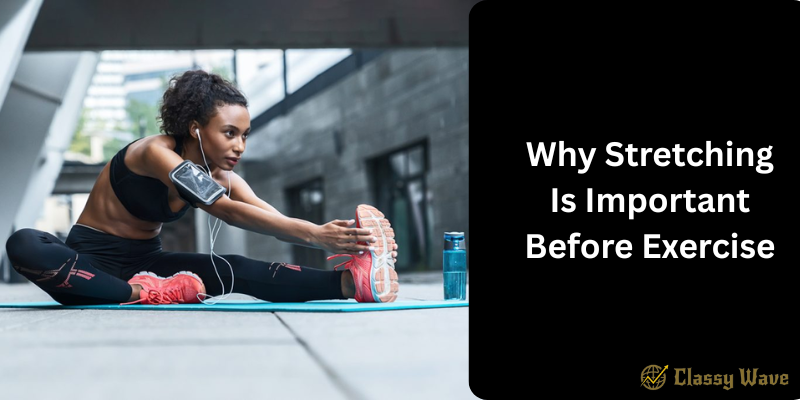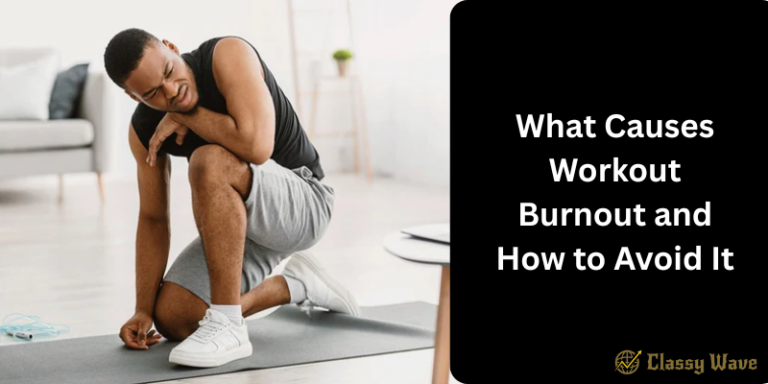Why Stretching Is Important Before Exercise | Classy Wave
Have you ever rushed straight into a workout without warming up, only to feel sore or stiff afterward? You’re not alone. Many people skip stretching, thinking it’s unnecessary or time-consuming. But the truth is, stretching before exercise is essential—it prepares your body, reduces injury risk, and helps you perform better. Think of it as “waking up” your muscles before they get to work.
Let’s dive into why stretching should be a non-negotiable part of your fitness routine.
Prepares Your Muscles for Activity
When you stretch before exercising, you gradually increase blood flow to your muscles. This delivers oxygen and nutrients that help them perform efficiently. It’s like preheating your oven before baking—you’re setting your muscles up for optimal performance.
Stretching helps your muscles become more flexible and ready to handle sudden movements or pressure during workouts.
Improves Flexibility and Range of Motion
One of the biggest benefits of stretching is improved flexibility. When your muscles are flexible, your joints can move more freely and smoothly. This not only makes exercises easier but also helps prevent stiffness afterward.
Whether you’re lifting weights, doing yoga, or running, flexibility ensures your body moves in the right form—reducing strain and improving overall motion.
Reduces the Risk of Injury
Skipping stretching can lead to muscle tightness, which increases the risk of pulling or straining muscles during exercise. When your muscles are tight, even a simple movement can cause discomfort or injury.
Stretching loosens your muscles, making them more pliable and less prone to tears or sprains. It’s like lubricating the parts of a machine before using it—everything works more smoothly and safely.
Boosts Blood Circulation
Proper stretching boosts blood flow throughout the body. This increased circulation helps deliver oxygen to your muscles and joints, improving performance and reducing fatigue. It also prepares your heart for physical activity, helping you transition into exercise more effectively.
Better blood flow means better muscle recovery and fewer cramps during workouts.
Enhances Muscle Coordination
Stretching activates your nervous system and improves the connection between your brain and muscles. This helps you move more efficiently and with better balance.
For example, dynamic stretches like leg swings or arm circles not only loosen the muscles but also “train” your body to move in a controlled way. This improves your coordination and helps prevent accidental slips or awkward movements.
Improves Posture
If you spend a lot of time sitting, your muscles—especially in your hips, neck, and back—can become tight. Stretching before exercise helps correct these imbalances and improves your posture.
Good posture supports better breathing and form during workouts, allowing you to engage the right muscles for each exercise.
Reduces Muscle Soreness
You might have noticed how sore you feel after a workout, especially if you skipped warming up. Stretching helps reduce post-exercise soreness by preparing muscles for the stress of physical activity.
By increasing flexibility and blood circulation, stretching minimizes the buildup of lactic acid in your muscles, leading to faster recovery and less pain.
Promotes Mental Focus and Relaxation
Stretching isn’t just about physical preparation—it’s also mental. Those few minutes of stretching help you transition from rest mode to workout mode.
Taking time to breathe deeply and stretch your muscles can calm your mind, relieve tension, and improve focus. It’s a great way to mentally prepare for your workout ahead.
Types of Stretching Before Exercise
Not all stretches are created equal. There are different types of stretches for different goals:
1. Dynamic Stretching
Dynamic stretches involve movement and are ideal before a workout. Examples include arm circles, walking lunges, or leg swings. These stretches warm up your muscles while keeping your heart rate up.
2. Static Stretching
Static stretching is when you hold a stretch for 15–30 seconds without movement. While this is best for cooling down after workouts, light static stretching can also be used before exercise to loosen tight muscles.
3. Active Stretching
In active stretching, you use your own muscle strength to hold a position, like lifting your leg and holding it without assistance. This type of stretch improves muscle control and balance.
When Should You Stretch?
Ideally, you should do a light warm-up before stretching—like a 5-minute walk or jog. Stretching cold muscles can cause strain. Once you’ve warmed up, spend 5–10 minutes on dynamic stretches before jumping into your main workout.
After your workout, finish with static stretches to help your body cool down and recover.
Common Stretching Mistakes to Avoid
While stretching has many benefits, doing it incorrectly can do more harm than good. Here are a few mistakes to watch out for:
- Bouncing during stretches – This can cause small muscle tears.
- Holding your breath – Always breathe deeply and evenly.
- Overstretching – Listen to your body and stop before it hurts.
- Skipping warm-up stretches – Stretching cold muscles increases injury risk.
Always stretch mindfully and focus on form, not force.
How Stretching Improves Workout Performance
Stretching primes your muscles for movement, helping you perform exercises more efficiently. With better flexibility, balance, and control, your body can handle higher intensity workouts with less fatigue.
For athletes, stretching also improves agility and reaction time. Whether you’re sprinting, weightlifting, or dancing, flexibility enhances your ability to move quickly and effectively.
Conclusion
Stretching before exercise isn’t just an optional step—it’s a crucial part of any fitness routine. It prepares your body physically, boosts your performance, and protects you from injury. A few minutes of stretching can make your entire workout more effective and enjoyable.
So next time you’re tempted to skip it, remember: stretching is your body’s way of saying, “I’m ready to move!”







